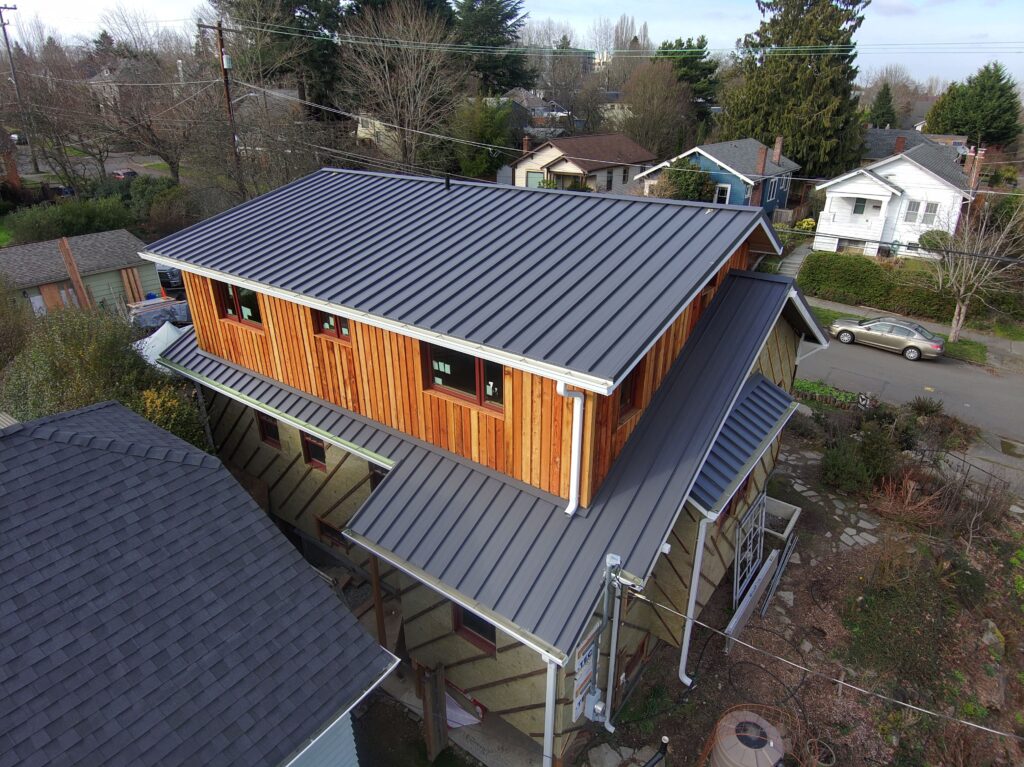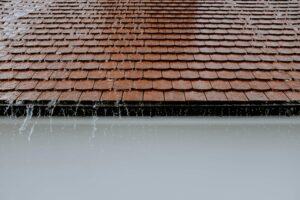Metal roofing is one of the most durable options on the market, but even the strongest materials won’t perform well if installed incorrectly. Whether you’re replacing an old roof or upgrading for better longevity, avoiding metal roof installation mistakes is key to protecting your investment.
In this guide, we’ll cover the most frequent installation errors, why they matter, and how to avoid them by hiring the right contractor and following industry best practices.
Top Metal Roof Installation Mistakes (And How to Prevent Them)
Homeowners often assume a metal roof guarantees decades of worry-free performance—but common roofing mistakes during installation can drastically reduce its lifespan.
Inadequate or Missing Underlayment
Skipping proper underlayment is one of the most critical metal roof installation mistakes. Without a quality moisture barrier, condensation can accumulate, leading to corrosion, leaks, and mold.
Tip: Always use breathable, approved underlayment designed for metal systems—especially in climates like the Pacific Northwest.
Incorrect Fastener Use
Fasteners that are overtightened, misaligned, or poorly sealed can compromise panel integrity. This is one of the most common metal roof problems, especially on DIY or rushed jobs.
Solution: Ensure your installer follows the manufacturer’s fastening pattern and uses screws with rubber grommets to maintain watertight seals.
Flashing Mistakes Around Roof Penetrations
Improper flashing around skylights, chimneys, or roof valleys is a leading source of leaks and corrosion. Flashing errors are one of the most overlooked metal roof installation mistakes—yet among the most damaging.
Avoid it by: Hiring installers who have experience working with custom-fit flashing on metal systems and understand water diversion.
Ignoring Thermal Movement
Metal roofing expands and contracts. If your contractor doesn’t account for this natural thermal cycling, panels may warp, ripple, or detach over time.
Fix: Use floating fastener systems or slotted holes to allow for controlled movement—essential for long-term performance.
Choosing the Wrong Contractor
The biggest mistake? Hiring the wrong person for the job. Lack of experience with metal systems leads to cut corners, exposed seams, and costly repairs later.
Before signing any contract, read:
👉 4 Tips for Hiring a Great Roofing Contractor
Why These Metal Roof Installation Mistakes Matter
Unlike asphalt shingles, metal roofing is a long-term investment—often lasting 40 to 70 years. But one bad install can void warranties, reduce performance, and lead to expensive tear-offs.
Avoiding metal roof installation mistakes is not just about saving money—it’s about ensuring your roof performs in wind, rain, heat, and snow for decades to come.
Final Thoughts: Avoiding Common Roofing Mistakes With Metal
If you’re considering a metal roof for your home, awareness is your best defense. Knowing the most common metal roof installation mistakes gives you the power to ask smarter questions, compare contractor bids, and protect your home from preventable problems.
Don’t let metal roof installation mistakes shorten your roof’s lifespan. Contact Orca Roofing today for expert metal roofing done right—built to last through every season.
Metal Roof Installation Mistakes FAQs

How to Install Metal Roofing?
Installing metal roofing requires careful preparation, precise fastening, and proper sealing to ensure long-term durability. The process typically involves removing the old roof (or adding underlayment over shingles), installing a moisture barrier, securing panels with appropriate fasteners, and flashing vulnerable areas like chimneys or skylights. Because metal expands and contracts, specialized techniques are needed to avoid future issues like buckling or leaks.
At Orca Roofing, our licensed installers follow manufacturer specifications and regional best practices to ensure your metal roof is built to last—especially in the wet climate of the Pacific Northwest.
What Are the Most Common Metal Roof Installation Mistakes?
The most common mistakes include incorrect fastener placement, skipping underlayment, improper flashing, and failing to account for thermal movement. These errors can cause leaks, rust, and premature failure. That’s why it’s essential to work with experienced professionals who specialize in metal roofing systems.
Is It Cheaper to Install Metal Roofing Over Shingles?
In some cases, yes—installing metal roofing over an existing shingle roof can reduce labor and disposal costs. However, not all roofs qualify. The underlying structure must be in good condition, and local building codes must permit the method. A trusted contractor like Orca Roofing can assess your home to determine whether an over-the-top installation is safe and cost-effective.
How Long Does Metal Roofing Last Compared to Shingles?
Metal roofing typically lasts 40 to 70 years, depending on the material and installation quality. In contrast, asphalt shingles generally last 15 to 30 years. While metal costs more upfront, its longevity, low maintenance, and energy efficiency often make it the more economical choice over time.


